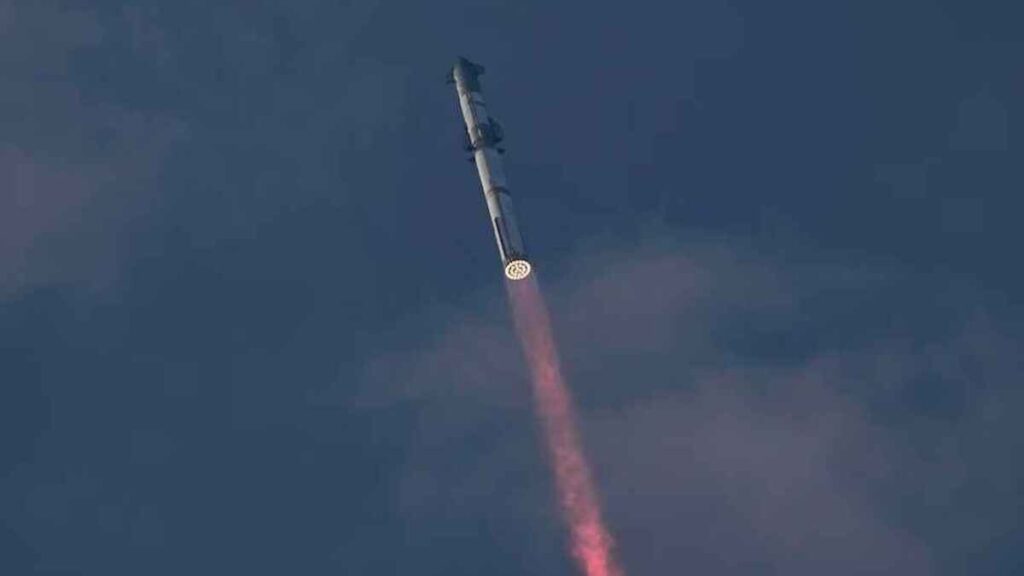
SpaceX’s recent mission with its Starship rocket may have hit a snag, but the company’s journey toward the stars is far from over. Although encountering a loss of contact during reentry, the third test flight represents a significant milestone in SpaceX’s quest for interplanetary exploration.
The launch from Boca Chica, Texas, marked a momentous occasion as the Starship rocket soared into space, propelled by the aspirations of SpaceX CEO Elon Musk and the collective efforts of the SpaceX team.
Musk’s enthusiasm on social media platforms like X reflected the pride and excitement surrounding the successful liftoff, highlighting the technological prowess and innovation driving the company forward.
NASA Administrator Bill Nelson also chimed in with encouragement and support, emphasizing the collaborative efforts between SpaceX and NASA in advancing space exploration.
ALSO READ: Japan Lunar Module Lands on the Moon Despite Broken Solar Panel
With initiatives like the Artemis program, which aims to establish a sustainable human presence on the Moon and pave the way for future missions to Mars, partnerships between government agencies and private companies like SpaceX are crucial for pushing the boundaries of space travel.
The Starship rocket itself represents a remarkable feat of engineering, touted by Musk as the largest flying object ever constructed. Weighing in at approximately 5,000 tons, the sheer magnitude of the Starship underscores SpaceX’s ambitious goals of facilitating long-duration, interplanetary flights capable of carrying up to 100 passengers.
Beyond space tourism, SpaceX envisions Starship playing a pivotal role in satellite deployment, lunar exploration, and even point-to-point transportation on Earth.
POLL—Should the Government Increase Taxes on the Wealthy To Reduce Economic Inequality?
However, the road to success in space exploration is fraught with challenges and setbacks, as evidenced by SpaceX’s previous test flights. The explosion of the second Starship rocket in November 2023 served as a stark reminder of the risks involved in pushing the boundaries of technology and exploration.
The Federal Aviation Administration (FAA) stepped in to oversee an investigation into the incident, emphasizing the importance of safety and regulatory compliance in space missions. Despite the setback during the recent test flight, the FAA remains committed to ensuring that SpaceX’s investigations into the mishap are thorough.
With no reported injuries or property damage, the focus now shifts to analyzing data from the flight and implementing measures to address any issues that may have contributed to the loss of contact during reentry.
ALSO READ: NASA Announces New Moon Landing Attempt With IM-1 Mission
SpaceX’s journey towards space exploration is a testament to human ingenuity and perseverance. Each test flight, whether successful or not, provides invaluable insights and lessons that contribute to the advancement of space technology.
As SpaceX continues to push the boundaries of what is possible, setbacks like the recent communication loss serve as reminders of the inherent risks and challenges of venturing into the cosmos.
However, with determination, innovation, and collaboration, SpaceX remains steadfast in its mission to make space travel accessible and sustainable for future generations.
You Might Also Like:
James Crumbley’s Trial Begins After Court Declared Wife Guilty in Son’s School Shooting
Da’Vine Joy Randolph’s Powerful Acceptance Speech at the Oscars Reduces Paul Giamatti to Tears
Meet Rumer Willis, Demi Moore’s Look-Alike Daughter Who Is Now an Actress
Robert De Niro Says Trump Is a “Total Monster,” Voting for Him Is Voting for Living in a Nightmare
Astronomer Discovers a Mysterious World That Might Have a Volcanic Moon in the Universe
